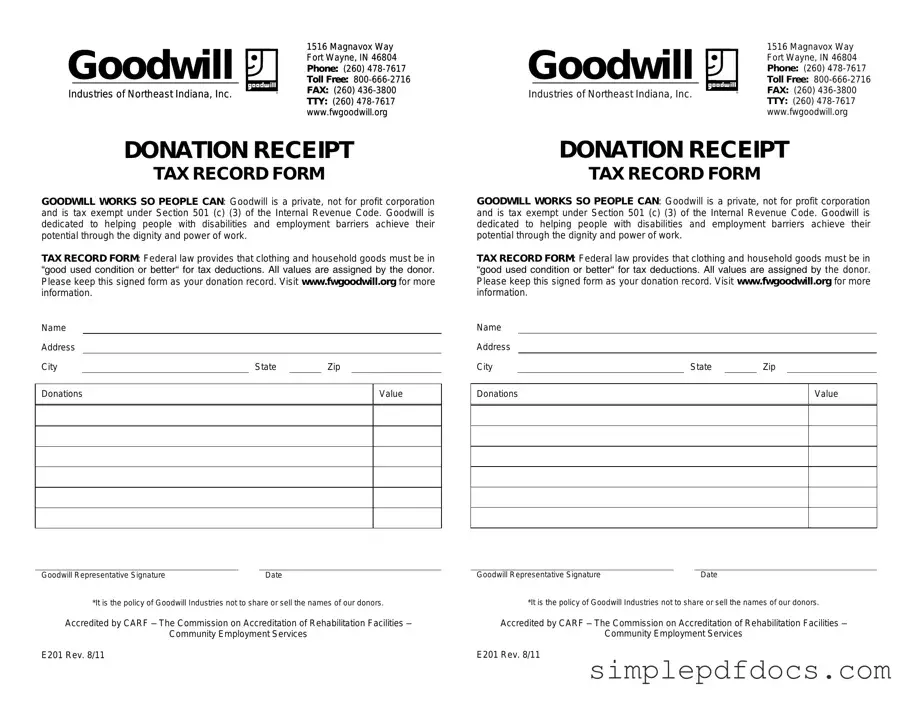When you donate items to Goodwill, obtaining a donation receipt is an essential step that benefits both you and the organization. This receipt serves as proof of your charitable contribution, which is crucial for tax purposes. It typically includes details such as your name, the date of the donation, and a description of the items donated. Understanding the significance of this form is vital, especially during tax season when you may want to claim deductions for your generosity. The Goodwill donation receipt form also outlines the estimated value of your items, though it’s important to note that you are responsible for determining this value. By keeping a record of your donations, you not only support a worthy cause but also ensure that you maximize your potential tax benefits. Familiarizing yourself with the elements of the receipt can streamline the donation process and help you stay organized throughout the year.
